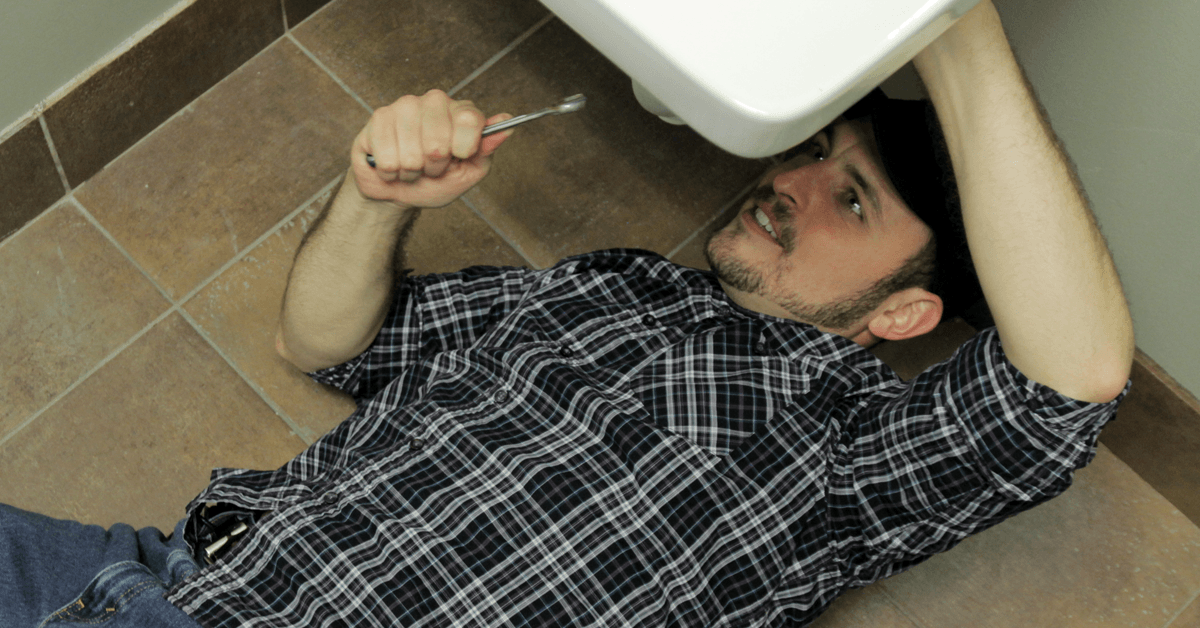Plumbing Tools List: 6 Essential Tools
By My Service Depot on Wednesday, October 17, 2018Looking to stock up on plumbing tools? Don't leave the shop without these essentials.
Do you run an efficient plumbing business? Clients love efficiency because it shows you have the experience to get the job done. Efficiency also ultimately benefits your bottom line, helping you complete more jobs in the same amount of time.
That’s why showing up to a plumbing job ill-prepared looks like a rookie mistake. You’re not ready to do plumbing work if you don’t have the right tools at your disposal.
These six essential plumbing tools allow you to do a quality job with minimal headaches. Spend less time searching for the tools you need and more time delivering excellent results to your clients.
Plumbing Tools List
- Augers
- Wrenches
- Tubing Cutter
- Metal File
- Plumber’s Tape
- Plungers
Augers
Augers, also known as drain snakes, reach deep inside pipes to extract clogs. Made of heavy duty coiled wire, most augers have a sharp, twisted nose that screws into the debris in order to remove it rather than push it further into the pipe. However, multiple types of augers exist, and each has its own unique way of removing clogs. They also come in a range of sizes in order to fit pipes of various diameters or lengths.
Plumbers use hand augers, power augers, flat tape augers, toilet augers, and rocket nozzle augers. Hand augers have a crank that the plumber turns in order to maneuver the coil, whereas power augers attach to a drill for extra oomph when tackling stubborn clogs. Flat tape augers fit smaller pipes thanks to their flat shape. Toilet augers have a short but flexible wire and long handle in order to navigate the bends in toilets. Finally, rocket nozzle augers represent an expensive but powerful method for removing clogs in larger diameter pipes; a pressurized blast of water pushes the clog through the pipe.
Wrenches
Because they work in some tight spaces, plumbers need specially designed tools. Thus, a basin wrench represents an essential tool in a plumber’s toolbox. A basin wrench has a long, slender, and adjustable body, a head that attaches to bolts and nuts at the top, and a lever that allows the plumber to twist the wrench at the bottom. This wrench allows plumbers to reach into the narrow gap behind a sink’s basin in order to remove and install faucets and water supply lines.
As the name implies, pipe wrenches and plumbing also go hand-in-hand. These heavy duty wrenches have a long handle for leverage, a C-shaped clamp that adjusts to the size of the pipe, and teeth that grip the pipe. These wrenches work best on round fittings and soft materials.
Tubing Cutter
When installing new copper pipes, plumbers inevitably have to cut them to size. A tubing cutter makes this process easy. Tubing cutters look like clamps, but they have a sharp wheel on one side that makes the cut. By turning the tubing cutter around the pipe while slowly applying pressure via the clamp, the wheel blade slices into the pipe and makes a clean cut. Tubing cutters also come in a compact size for use in tight spaces, such as behind a sink or within a wall.
Metal File
After cutting a pipe, filing it ensures that no sharp edges remain. This not only keeps plumbers safe as they handle cut pipes, but also makes connections stronger. Therefore, a metal file comes in handy when doing plumbing work. The best metal files for plumbers also have an arrow-shaped piece on one end for scraping away burrs on the inside of the pipe.
Plumber’s Tape
Also called Teflon tape, plumber’s tape creates a secure and waterproof connection between pipes and fittings. No plumber wants to leave behind a leaking pipe! Plumbers apply this flexible “tape” to the threads on a pipe before attaching the fitting. It acts as a rubber sealant to ensure the connection remains tight.
Plungers
Most people use plungers as an initial strategy for dealing with a clog. It may seem a little bush league for professional plumbers to use such a “simple” tool, but plungers actually do a great job. Even though plumbers have other sophisticated tools at their disposal, sometimes they just need to reach for that good old fashioned plunger.
Plungers work best on clogs located near the surface of the drain. The suction pulls the clog to the surface or breaks it up enough to allow air and water to pass around it and flush it through. Two main types of plungers exist: cup plungers and flange plungers.
Cup plungers, also known as sink plungers, have a flat bottom and work best on flat surfaces, such as kitchen sinks or bathtub drains. Flange plungers, also known as toilet plungers, have an extra piece of rubber at the bottom that allows them to adapt to different shapes, such as the curve of a toilet bowl.
The Right Tools for the Job
You’d never try to saw through wood with a hacksaw, so why would you use the wrong equipment for a plumbing job? Do yourself a favor and use the right tools from the get-go for quality, accuracy, and safety when plumbing.
Your business can also take advantage of other tools like field service software. Smart Service software integrates with Quickbooks and can help streamline everyday work processes like scheduling, dispatching, routing, and more. Try a free demo today to see how it can help take your business to the next level!


